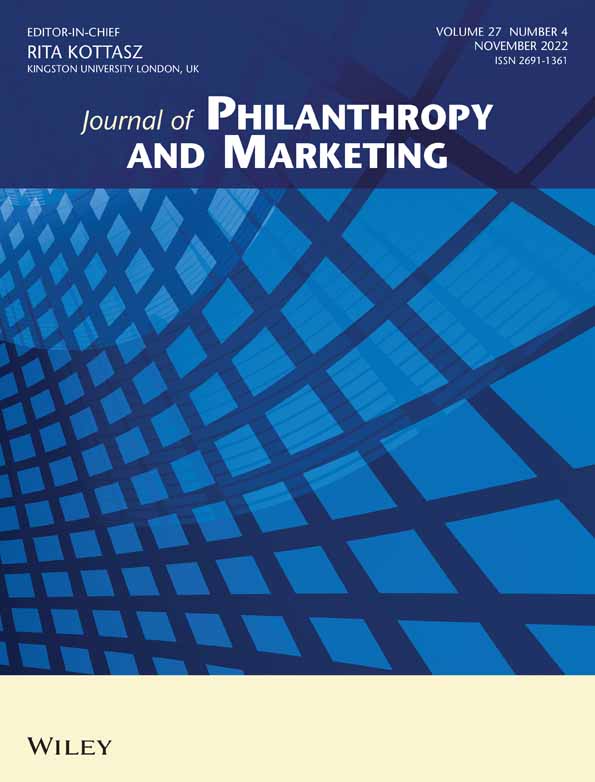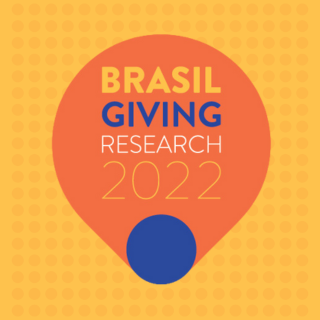Promoted by IDIS –Institute for the Development of Social Investment, the Brazil Giving Research is the broadest study on individual donation in the country. In its third edition, it features a special chapter on the Generation Z
Donating is becoming increasingly popular in Brazil. In 2022, 84% of Brazilians over the age of 18 and with a family income above one minimum wage (approximately $270), made at least one type of donation, be it money, goods, or time, in the form of volunteering. Two years earlier, the average was 66%. Donating directly to NGOs and socio-environmental projects was practiced by 36% of respondents, remaining stable despite the socio-economic crisis faced by the country. These findings are part of the third edition of the Brazil Giving Research, an initiative of IDIS – Institute for the Development of Social Investment and carried out by the Ipsos research institute.
The Research also explores the volume of resources. The median of donations reached BRL 300. It was BRL 240 in 2015 and BRL 200 in 2020. The growth was driven by higher donations over the last year. For comparison, in 2021, according to the Brazilian Benchmarking of Corporate Social Investment (BISC), the amount allocated to organizations and causes of public interest by the 324 participating companies and 17 institutes was BRL 4.1 billion ($833 billion).“Brazil is a country with many inequalities and the practice of donation is a fundamental aspect of our society. In the Brazil Giving Research, we set out to understand who the donors are, what are their motivations, what is their perception of NGOs, and what are the barriers presented by non-donors. This year, we also looked at Generation Z, the donors of the future. This is important data that helps us to strengthen the giving culture,” says Paula Fabiani, CEO of IDIS.
Download and get to know the main results:
WHAT IS THE DESTINATION OF MONETARY DONATIONS?
Among the respondents, 48% said they would make some kind of monetary donation in 2022. The figure is 7 points higher than that found in 2020 and equivalent to the 2015 level (52%). Part of these funds went to NGOs, socio-environmental projects, or social campaigns, with 36% of the population making what we call institutional donations. Interestingly, however, there was a significant increase in the percentage of people who reported donating alms, rising from 6% in 2020 to 16% in 2022. This growth is in line with the increase (from 1% in 2020 to 10%) in institutional donations to organizations and projects that serve homeless people, showing the heightened sensitivity to the cause.
The Research’s figures are also a social portrait of Brazil, whose homeless population exceeded 281,000 in 2022. This means an increase of 38% over the previous three years and most of this is due to the impoverishment of the population, a consequence of the economic crisis that is plaguing the country.
PERCEPTION ABOUT NGOs
In 2020, with NGOs playing a leading role during the pandemic, there was a significant improvement in public opinion about civil society organizations. Two years later, the data shows a considerable downturn, but even more positive than the picture in 2015.
The biggest setbacks appear in questions relating to trust in third-sector organizations. For the statement “NGOs make it clear what they do with the resources they invest”, there was a 14-percentage point drop in agreement (from 45% to 31%); and for “Most NGOs are trustworthy”, there was a 10 percent point drop (from 41% to 31%).
“The findings begin to make it clearer which effects of the pandemic are short-lived, and which are here to stay. The image of the work carried out by the Third Sector is still quite volatile and prone to following the social context. It’s important that the sectors collaborate to strengthen the perception and engagement of society in general,” says Luisa Lima, Communications and Knowledge Manager at IDIS.
On the other hand, Generation Z, youth aged between 18 and 27 years old, are much more optimistic and positive about NGOs in all respects. The difference with the general population is especially large when it comes to the statement that ‘NGOs bring benefits to those who really need them’ (74% among Generation Z against 58% of the general population). In statements such as ‘NGOs make it clear what they do with the resources’ and ‘Most NGOs are trustworthy’, Generation Z’s agreement is around 39%, which, even though it is higher than in the general population, is still a point of attention.
SOCIAL CIRCLE OR DIGITAL MEDIA: WHICH ONE INFLUENCES THE DONATION THE MOST?
This edition includes a question about the main drivers of donation practices. We asked the institutional donors to choose the three most important to them from a list of possibilities. The responses showed that social interaction in religious settings and communities has the greatest power to influence a donor, followed by family, neighbors, and friends. Meanwhile, social media and digital influencers came fourth with 17%. Among Generation Z, the value of the reach of digital media and influencers grows to 25% of donors.
When asked which social media influences them to donate, both among institutional donors from the general population and from Generation Z, the most common mention was Instagram (85% and 89% respectively), followed by Facebook (33% and 37% respectively),. After the top two, we have the most significant changes: while the general population considers YouTube and WhatsApp (both with 13%) to be among their other biggest influences, Generation Z, third and fourth place goes to TikTok and YouTube. In this group, WhatsApp appears with only 4% of responses, behind Twitter. In both cases, LinkedIn was the least mentioned network.
CITIZENSHIP ACTION BY BRANDS AND COMPANIES
We sought to understand how the perception of the reputation of brands and companies influences consumer decisions. The result shows that people punish companies and brands that behave inappropriately (77%) much more than they reward those that adopt good social investment practices (44%). This impact is even greater among institutional donors – 85% and 49% respectively.
GENERATION Z: HOW DO YOUNG PEOPLE BETWEEN 18 AND 27 DONATE?
As with the general population, the data on Generation Z shows that they are also donating more. Meanwhile, in 2020, 63% of them said they had made some kind of donation, and in 2022 the figure reached 84%, matching the national average. The highlights of donations in this section are mainly donors of goods (76%) and voluntary work (30%). When it comes to donating money to NGOs and socio-environmental projects, young people are 9 points below the general average, at 27% compared to 36% – a natural phenomenon, since the availability of money at these ages is sometimes lower than when compared to older people. On the other hand, they also tend to have a more positive view of donations and NGOs.
The Research also shows that young people who donate also tend to promote or contribute in some way to fundraising or mobilization campaigns to help other people. This was confirmed by 7 out of 10 young donors in 2022, and 20% of them say they have done it more than once.
When it comes to causes, actions related to children, health, and the fight against hunger are the most popular among Brazilians, and this is also true among young people. However, the ranking still shows a difference between Generation Z donors and the general population. Young people are more sensitive to homeless people, showing a willingness to take on more visible issues with more immediate impacts. The animal cause also has more supporters among Generation Z than in the population as a whole.
OUTLOOK 2023
In general, there is an optimistic outlook regarding the growth in donation practices. Among institutional donors, 45% say they will donate more the following year. In the previous edition, this percentage was 36%. The same movement appears among Generation Z donors: 52% say they are willing to donate more. It is also positive that 93% of non-donors said they could start donating, a big change from 2020 when only 57% were willing to do so. The trigger for the change in attitude, however, was mixed. 28% said they would donate if they had more money, 13% said they would like to know how the money is being used and 12% wanted to meet an NGO they trust.
METHODOLOGY
The 2022 Brazil Giving Research was carried out between May 3 and June 13, 2023, using a quantitative approach, with 1,508 telephone interviews. The sample is representative of the national scenario and the margin of error is 2.5 percentage points up or down.
Participants’ profile
– Men and women
– Class: ABC
– Age: over 18 years old
– Family income greater than 1 minimum wage
ORGANIZATION AND SUPPORTERS
The 2022 Brazil Giving Research is an initiative of IDIS Institute for the Development of Social Investment and CAF – Charities Aid Foundation. Ipsos was responsible for carrying out the research and Instituto Beja, Movimento Bem Maior, Raízen, Instituto ACP, Instituto Galo da Manhã, Instituto MOL, Doare, and Instituto Phi, were the financial supporters. Philanthropists Luis Stuhlberger and Teresa Bracher also contributed.
Download and get to know the main results:
 In an article published in the academic journal Journal of Philanthropy and Marketing, on the Wiley platform, Paula Fabiani, CEO of IDIS, together with Marcos Paulo de Lucca Silveira and Flavio Pinheiro, evaluates the main hypotheses concerning the influence of income on charitable giving, drawing on data from Brazil Giving Research 2020 with 2099 respondents in Brazil. This study contributes with new evidence to the topic within the context of a middle-income Latin American country, an aspect often overlooked in previous studies. Our analysis focuses on how an individual’s household income influences three key aspects: the likelihood of giving, the amount given, and the proportion of household income donated.
In an article published in the academic journal Journal of Philanthropy and Marketing, on the Wiley platform, Paula Fabiani, CEO of IDIS, together with Marcos Paulo de Lucca Silveira and Flavio Pinheiro, evaluates the main hypotheses concerning the influence of income on charitable giving, drawing on data from Brazil Giving Research 2020 with 2099 respondents in Brazil. This study contributes with new evidence to the topic within the context of a middle-income Latin American country, an aspect often overlooked in previous studies. Our analysis focuses on how an individual’s household income influences three key aspects: the likelihood of giving, the amount given, and the proportion of household income donated.



